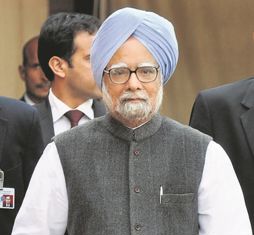The Great Flap of 1942: How the Raj Panicked over a Japanese Non-invasion by Mukund Padmanabhan. Penguin Random House. Pages 288. Rs 599
Book Title: The Great Flap of 1942: How the Raj Panicked over a Japanese Non-invasion
Author: Mukund Padmanabhan
Debashish Mukerji
December 5, 1943, was a Sunday, but my grandfather, with some pending work to complete, was all set to leave for his office in Calcutta’s Dalhousie Square (today, Kolkata’s BBD Bagh). Just then, however, his son — my uncle — all of two years at the time, his tiny body gleaming from a recently concluded oil massage, grabbed his father’s legs and threw a tantrum, insisting he stay at home. At first my grandfather resisted, but later, especially after he noticed oil stains on his trousers, relented. Soon after, Japanese bombs rained down on the city, one of them hitting the very building where my grandfather worked.
The story, which I’d heard often as a child, came back forcefully while reading Mukund Padmanabhan’s book, from which I learnt that the main target of that particular raid had been Calcutta’s Kidderpore dockyard, a crucial trade hub in those days, which “250 (Japanese) planes bombed in two waves”, reducing it to rubble and leaving “500 casualties, about a third of them fatal”.
This turned out, however, to be Japan’s last hurrah, as its fortunes changed dramatically thereafter, especially following its defeat in the hard fought Battle of Kohima/Imphal from April to June 1944. The reversal was a complete contrast to its early successes, which had begun with massive air raids on the US-owned Pearl Harbour in the Pacific Ocean on December 7, 1941, signalling its formal entry into World War II.
Padmanabhan notes that destroying Pearl Harbour was actually a secondary Japanese objective, intended to paralyse the US fleet in the area, for on the same day — in pursuit of its real goal of dominating East and Southeast Asia — it also attacked US-ruled Philippines and British Malaya (Malaysia), making astonishing progress over the next month, “ripping apart like muslin, empires built over centuries”. By mid-January, it had captured Kuala Lumpur; by mid-February, the big prize of Singapore was won; and on March 9, 1942 — having overrun large parts of the Dutch East Indies (Indonesia), Thailand and Burma (Myanmar) — it took over Yangon (Rangoon) and the Andaman Islands.
These victories, along with a series of air raids on Indian targets — Cocinada (Kakinada), Vizagapatam (Visakhapatnam), Imphal, North Lakhimpur, Agartala and Calcutta, as also Chittagong (Chattogram) and Cox’s Bazaar (now in Bangladesh) — sparked off panic in India of a full-scale Japanese attack, accompanied by far more intensive bombings. It led to most of the coastal cities — Calcutta, Cuttack, Vizagapatam, Madras (Chennai), Cochin and even Mumbai (Bombay) — partially emptying out, and is the core subject of Padmanabhan’s book.
His research shows that between December 13 and 30, 1941, 17 per cent of Calcutta’s population left the city by train, while many more did so by road. Each successive British reverse thereafter led to a fresh exodus. Around 60 per cent of Vizagapatam’s residents left soon after Japan attacked Malaya, as did nearly everyone after the town was bombed on April 6, 1942. Madras saw 75-90 per cent of its people depart in phases, avidly encouraged by the British rulers, who shifted out most of their government departments too.
But the expected attack never came, be it through air, sea or land (until much later in mid-1944, when, as noted earlier, it was effectively countered). Eventually, the unseemly scramble to leave proved an anti-climax, bathetic and ludicrous; which is probably the reason, Padmanabhan muses, why it is rarely mentioned in historical accounts of the period.
In fact, Padmanabhan’s book is much more than an account of the exodus, encompassing the entire gamut of developments in India that followed as a consequence of Japan’s entry into the war. This is once again a neglected area of 20th century Indian history, where, as Padmanabhan notes, the focus has largely been on the freedom movement or the collapse of the British rule and its aftershocks, especially Partition.
Padmanabhan examines the Congress’ dilemma over its stance on the war, its suggestions to the British rulers and their responses, and how both these — particularly, Mahatma Gandhi’s attitude — were modified following Japan’s early successes and later reverses. He analyses the propaganda battle between Germany/Japan on the one hand and Britain on the other to win Indian hearts and minds. The former used Azad Hind Radio in six Indian languages, spearheaded by Subhas Chandra Bose, and the latter roped in noted writers like George Orwell — who was earlier a critic of imperialism — to make its hype more credible.
A former editor of The Hindu, Padmanabhan provides an enthralling account. His research is exhaustive, as is his craftsmanship in dovetailing minute details into his narrative without sacrificing its pace. However, two questions remain unanswered. First, was the Indian response to the Japanese war threat typical, or was it excessively pusillanimous? How have other cities reacted in similar circumstances — say, London (ruled by the same British government), following the German Blitz of late 1940, when it was bombed every day at a stretch for 58 days? Or Chinese cities like Chongqing, which were carpet bombed by the Japanese in 1938?
The second question relates to the Japanese war strategy. What were they smoking? Did they ever intend to conquer/liberate India? If they did, why the inordinate two-year delay in attacking Manipur after capturing Burma in March 1942? Was it because their supply lines were too stretched? Why did Japanese Admiral Jisaburo Ozama, heading a formidable fleet that sank 20 merchant vessels in a day in the Bay of Bengal in mid-1942, who seemed headed straight for the Orissa (Odisha) coast, suddenly change his mind and withdraw to the Andamans?
At the same time, if India was never a part of Japan’s imperialist design (and all its attacks on the country were only intended to disrupt British shipping), why did it aggressively woo overseas Indians in the territories it captured? Why did Hideki Tojo, chief of the Japanese army, claim that the fall of Singapore “was a great opportunity for Indians” to liberate themselves? Why did Japan treat Indian soldiers in the British army, captured after the fall of Singapore, far better than their British counterparts, encourage them to desert and form the Indian National Army, which was later handed over to Bose? Perhaps Japanese war records — if available in translation — could have been looked into.














